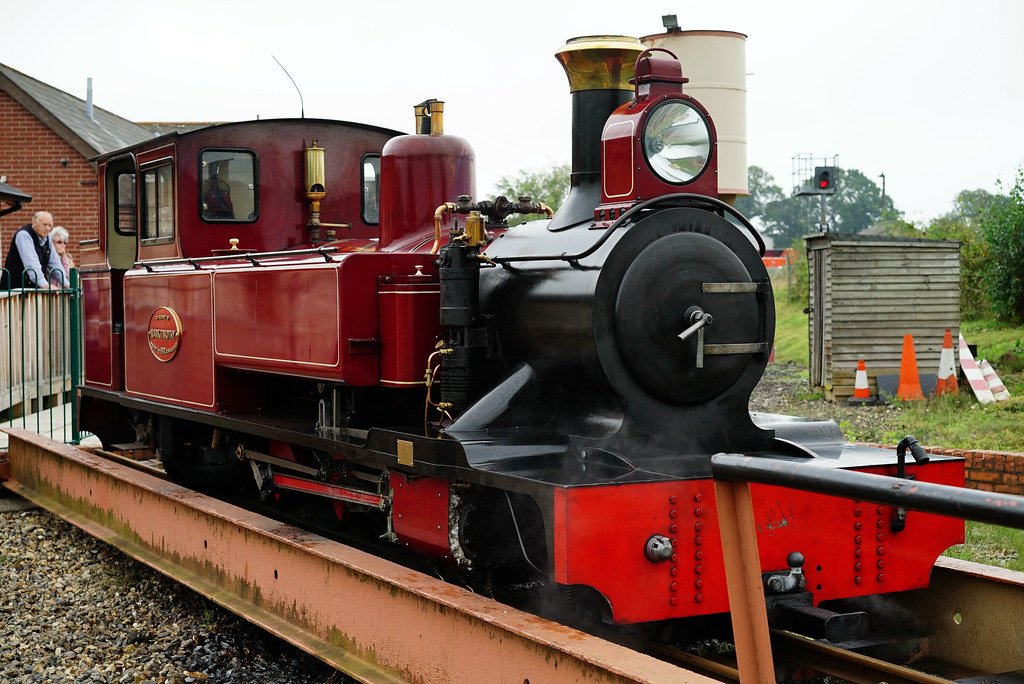
The Volk’s Electric Railway in Brighton is the world’s oldest operating electric railway, a pioneering marvel that has captivated visitors since its debut in the Victorian era. Its story is one of innovation, resilience, and seaside charm.
The railway was the brainchild of Magnus Volk, a Brighton-born inventor and electrical engineer. Already known for installing electric lighting in the Royal Pavilion and developing the town’s first telephone system, Volk launched his electric railway on 4 August 1883. The original line ran for just over 400 metres between the Aquarium and the Chain Pier, using a 2 ft (610 mm) gauge and drawing 50 V DC power from the running rails.
Encouraged by its popularity, Volk extended the line in 1884 to Paston Place (now Halfway Station) and widened the gauge to 2 ft 8½ in (825 mm). A third rail was added in 1886 to improve power delivery, and the railway quickly became a beloved attraction for both locals and tourists.
In 1896, Volk embarked on an ambitious project: the Brighton and Rottingdean Seashore Electric Railway, a sea-going tram that ran on tracks laid in the surf. Though visually spectacular, it was short-lived—storm damage forced its closure in 1901, and the original electric railway was extended eastward to Black Rock that same year.
By the 1930s, the railway faced changes due to urban development. In 1930, the western terminus was moved from Palace Pier to Aquarium Station, and in 1937, the eastern end was shortened to accommodate the new Black Rock Lido.
During World War II, the railway was closed from 1940 to 1948. Station buildings were demolished to prevent enemy use, and the rolling stock was stored inland. After the war, Brighton Corporation rebuilt the line with upgraded rails and electrification. The railway reopened in 1948, with new stations and restored cars, many using salvaged wartime materials.
In the 1960s, the railway introduced two-car multiple operation to handle increased passenger numbers. However, the rise of package holidays and the closure of Black Rock Lido led to declining ridership. In 1995, the Volk’s Electric Railway Association (VERA) was formed to support preservation efforts.
A major turning point came in 2014, when the railway received a £1.6 million Heritage Lottery Fund grant. This funded a new visitor centre, a five-road depot with engineering facilities, and the restoration of historic cars. Educational materials were also developed to highlight the railway’s scientific and cultural significance.
The railway now runs for 1 mile (1.6 km) between Aquarium Station and Black Rock, with an intermediate stop at Halfway. It operates on a 2 ft 8½ in gauge, powered by 110 V DC via a third rail. The line features passing loops, spring-loaded turnouts, and a fleet of restored Victorian and Edwardian railcars.
Volk’s Electric Railway remains a cherished part of Brighton’s seaside heritage, offering a unique blend of history, engineering, and nostalgia. It stands as a tribute to Magnus Volk’s visionary spirit and the enduring appeal of electric transport.
This historical summary was generated using AI and draws on publicly available sources including Volk’s Electric Railway’s official history, Wikipedia, VERA, and the National Transport Trust.